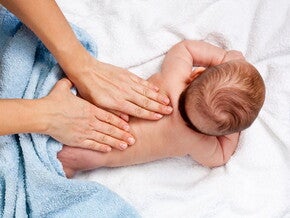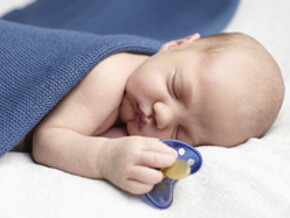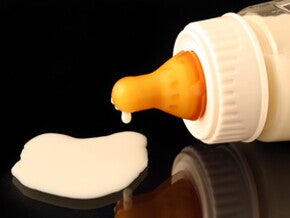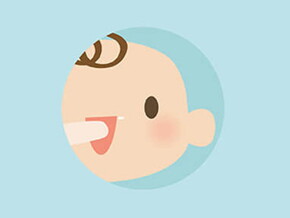
8 تمارين بدنية مفيدة لنمو طفلك
The National Association for Sport and Physical Education in the United States recommends that infants and toddlers engage in regular exercise and physical activity for a daily average of 60 minutes per day.
To prove it, we’ve put together some simple workouts that you can do with your baby to support his growth:
- Hold your baby’s feet and gently pull his legs towards him then towards his nose.
- Place your baby on his back, grab his little hands and stretch his arms backwards then forwards, crossed over his chest. Repeat this exercise 5 times.
- Grasp your baby’s feet, one foot in each hand and lift them up as if you’re about to change his diaper. Then, slowly separate between his legs to make a V-shape. Go back to the first position and repeat the exercise.
- Hold your baby’s arms and move them up and down, then right and left.
- Take your infant’s feet, one foot in each hand and gently move them in a circular pedaling motion.
- While your baby is in supine position, help him flip from front to back then from back to front.
- Lift your baby swiftly into the air while you firmly support his tummy.
- Take your infant’s hands and gradually pull him from a sitting to a standing position, whilst keeping his back straight. Then gradually get your baby back to the sitting position. Repeat this exercise four times.
Those were few physical exercises you can apply to your baby from age 6 to 12 months. Try them out and you will notice their positive impact on his growth and energy level!
Read More: Your Newborn Development From A To Z
Related articles

Tips To Make Diaper Changes Fun For Your Baby
Stop The Diaper Change Battles!
2 mins to read

Avoid These Mistakes While Giving Your Baby An Oil Massage!
Don't Make These Baby Massage Mistakes!
3 mins to read

The Do's And Don’ts Of Baby Pacifiers
Soothers: A User's Guide For New Mothers!
2 mins to read

Tips And Tricks To Give Medicine To Babies
How Can I Get My Baby To Take His Medications?
2 mins to read

Childhood Diseases And How To Prevent Them
Childhood Diseases - What Mothers Need To Know!
3 mins to read

Tips To Get Your Teething Baby To Sleep
How To Handle Teething And Sleeping?
2 mins to read

Watch out - diarrhoea!
My baby has had diarrhoea for two days. Is this normal or should I be seriously worried? Is it possible to avoid diarrhoea?
2 mins to read

Oral Thrush: Signs and Remedies
What You Need To Know About Thrush In Babies!
2 mins to read

HMOs: the third most abundant solid component in breast milk, to support your child's immune system
As a parent, you want to protect your child now and in the future. That includes shaping his or her immune system to make it strong.
4 mins to read

Common Weaning Problems
Tips For Mothers: Weaning Challenges And Solutions
2 mins to read

Choosing the Right Hypoallergenic Infant Formula For Your Baby
Does Your Baby Need A Hypoallergenic Formula?
2 mins to read


How to deal with your baby’s teething problems.
Try these simple tips to ease the discomfort related to teething. It helps you and your baby as well. Read on to learn more about teething problems.
1 min to read

Your guide to starting solid food for babies
Congratulations on reaching this exciting milestone and have fun feeding your baby his first foods.
10 mins to read

Baby-led weaning checklist
Wondering when to start baby food? Most babies are ready to start trying at around six months.
2 mins to read


GENTLE OPTIPRO®: building the foundations of your child’s lifelong health
GENTLE OPTIPRO®, an optimized blend of proteins developed by Nestlé.1,2
3 mins to read

Your guide to starting solids
Congratulations on reaching this exciting milestone and have fun feeding your baby his first foods.
4 mins to read

Your 6 to 12 month old’s hunger & fullness cues
At this stage, your baby’s menu may have expanded to include more cereals and baby food varieties. His excitement over food can turn mealtime into a fun, playful experience for the both of you.
2 mins to read

